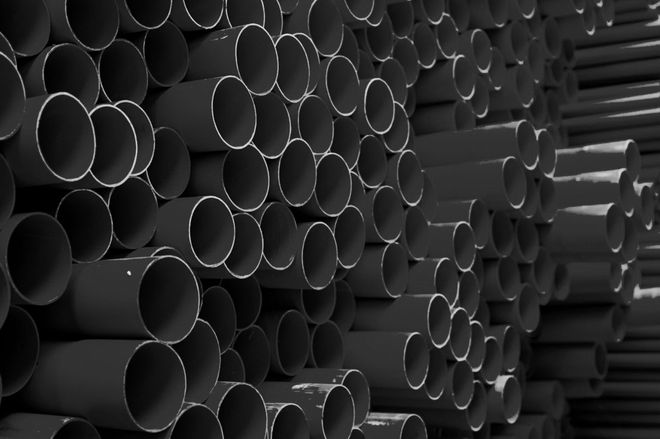As advances in chemistry continue to bring new materials into the recyclable realm, a University of Michigan team is taking aim at one of recycling’s toughest problems.
Scientists at the University of Michigan have reportedly developed a way to turn waste PVC (polyvinyl chloride) into usable products, opening up some new possibilities for this traditionally non-recyclable material.
PVC ranks among the top plastics in terms of production and volume and is used in everything from plumbing and flooring, to shower curtains and clothing. However, it has zero recycling rates in the United States, and efforts to recycle this material have been hampered considerably due to its toxic content.
“PVC is a plastic that no one wants to deal with because it has its own unique set of problems,” said Danielle Fagnani, lead author of the research paper. Recycling everything in the process, and it’s often toxic. It also releases hydrochloric acid very quickly when heated.”
Plasticizers are added to common plastics to improve their durability and flexibility, but some of them pose serious risks to human health, and bisphenol A is one example. Another example is phthalates, dubbed “the ubiquitous chemical” due to their widespread use in everyday products, which have been linked to endocrine disruption, childhood cancer and premature death.
Plasticizers are added to common plastics to increase their durability and flexibility, but some of them pose serious risks to human health, especially the well-known BPA. Another is phthalates, dubbed “the ubiquitous chemical” due to their widespread use in everyday products, which have been linked to endocrine disruption, childhood cancer and premature death.
Phthalates in PVC are one of the material’s most harmful constituents, and this and other plasticizers are leached out during traditional recycling processes that rely on heat treatment. This process also releases hydrochloric acid from the PVC, which can cause chemical burns and corrode recycling equipment.
As a result, Fagnani and her colleagues are experimenting with ways to recycle PVC that don’t rely on heat, leading to a novel electrochemical technique with exciting potential. The research team used electrons to break down the carbon-chlorine bonds in the material, and by mediating the process with one of the PVC plasticizers, they were able to precisely control the release of hydrochloric acid.
“We found that it still releases hydrochloric acid, but at a much slower and more controlled rate,” she added. The results of this study were recently published in the journal Nature Chemistry.
This allows the acid to be harvested and used as a reagent in other chemical reactions, while the process also produces chloride ions, which can be used to chlorinate molecules used in pharmaceutical and agricultural products. The method also leaves other materials behind, which scientists are trying to find uses for, so there is room for improvement. This work shows how chemical recycling can be used to give problematic materials a second life.
Anne McNeil, lead researcher on the technology, said: “It is humanity’s failure to create these amazing materials that improve our lives in so many ways, but at the same time to be so short-sighted and not think about what to do with this waste.
“In the U.S., we’re still stuck at a 9% recycling rate, and that’s only a handful of types of plastic. And, even with the plastic we recycle, it’s resulting in lower and lower quality polymers. Our beverages Bottles can no longer be drink bottles. They become textiles or park benches and then end up in landfill,” she added.




GIPHY App Key not set. Please check settings